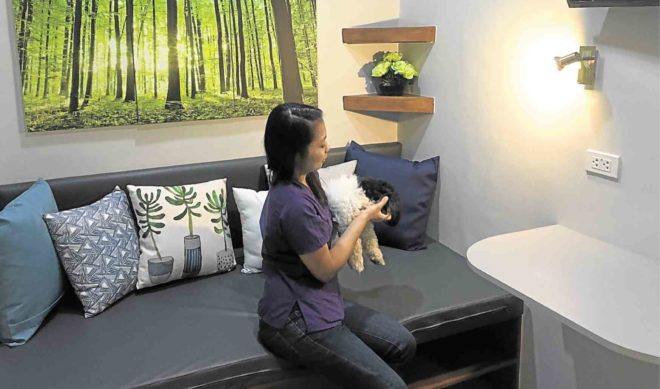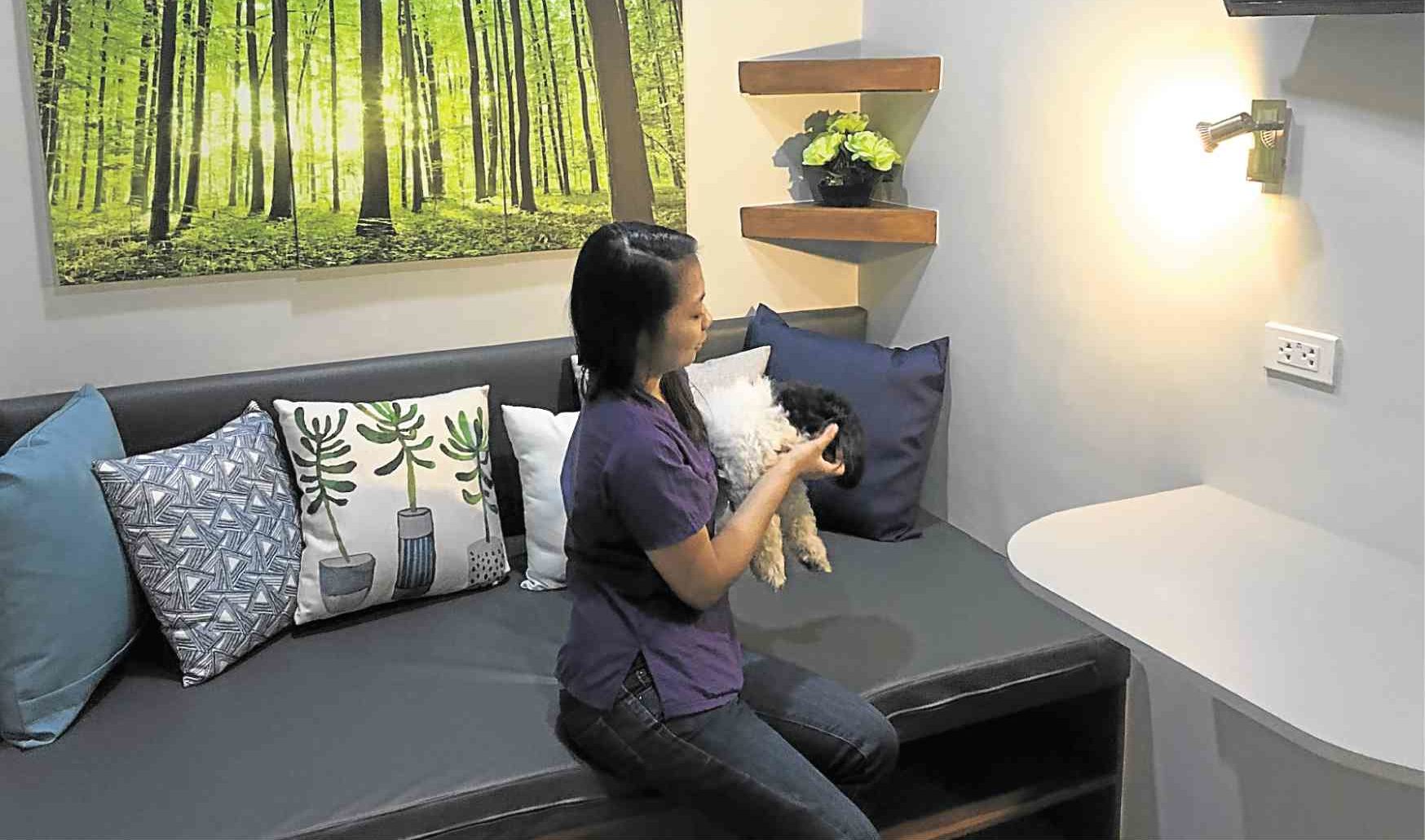
It’s okay,” says Dr. Marga de la Rosa Carpio, her arm around Joy, a mom who’s in tears because her baby Mica must undergo minor surgery for the removal of coin-sized abdominal stones. “It’s a minor operation, but it will be good to get them out soonest.” Mica, by the way, is a Shih Tzu.
“You just have to reassure them,” says Dr. Marga’s husband, Dr. Nick Carpio, on dealing with emotional pet owners. “They want guarantees, when of course, you know there are none. You just have to respect their feelings.”
We’re in the sixth and most high-tech new branch of the renowned veterinary care provider Vets in Practice (VIP), which opened Aug. 8 at the McKinley West Township in the Fort, boasting what Dr. Marga calls their “dream layout.”
State of the art
Here, some 500 sq m of state-of-the-art animal hospital space can accommodate most any patient, from inch-long kittens or hamsters to the 100-lb, 20-year-old Sulcata turtle in a cage next to a rescued asPin being fussed over by her owner.
While Dr. Marga is giving me the tour of the place—cozy boarding facilities, several suites with beds for human companions and CCTV so owners can watch their pets remotely—Dr. Nick ducks out for the surgery, and manages to remove several stones from Mica in about half an hour. Joy is, well, overjoyed, stroking the groggy pup while Mica’s daughter, Chloe, looks on.
The clinic has several consultation rooms and the latest equipment, including infusion IV pumps, digital x-rays and a sparkling new operating room.
The partners behind VIP—Doctors Marga and Nick Carpio, Dr. Mike Velhagen and Dr. Nielsen Donato—have come a long way since their early days on the second floor of a tiny apartment building in Mandaluyong, the first VIP clinic, which opened in 2003. They have not only expanded their clientele, but also have continued to work with animal welfare groups like the Philippine Animal Welfare Society (PAWS) and Compassion and Responsibility for Animals (Cara) to promote awareness of animal rights and health.
More dog owners
VIP at the Fort opened for a very valid reason, Dr. Marga says: longtime clients from the Fort, Bonifactio Global City, Makati and even Parañaque who frequent the main branch at the Mandaluyong Circle area can’t hack the stress of crossing Edsa anymore.
“There are more dog owners now, maybe because there’s more access to better dog products and services, and animals are really considered part of the family,” Dr. Marga says.

Today, pet products are in supermarkets, and malls and condos have become pet-friendly. The animal products industry is “recession-proof,” Dr. Marga says, and the dog food business continues to grow.
While there are still dog owners who would think nothing of buying a P500,000 Tibetan Mastiff, or even a P150,000 Alaskan Malamute—and investing in the airconditioning such breeds need, by the way—there are also more unapologetic, enlightened owners of rescued or adopted asPins, who are brought to VIP for the best care available.
Indeed, there are clients who go above and beyond the required health care.
Preventive health
Dr. Marga says, “Our bread and butter are not vaccines, in fact, but preventive health, as well as spay and neuter—a sign of an educated population. We still get a few owners who want to recoup what they spent on the animal, or who want their dog to experience having sex. But mostly, we have people who realize there is a population issue and don’t want to contribute to it, and who also know spaying and neutering can mean less illness.”
A common complaint in both dogs and cats nowadays is kidney disease, a result of bad diets and a bad gene pool—the latter, a consequence of inbreeding in puppy mills, by irresponsible breeders who are only after the money.
“If you want to go pedigreed, go to a responsible breeder,” says Dr. Nick. “You pay more, but you know what you’re getting. A good breeder is not just one who breeds puppies, but one who invests time, effort, and money in developing, improving and promoting the breed according to the breed standard.”
Any responsibility necessarily ends with the dog’s owners, Dr. Marga says. That’s why they would love to see more hands-on owners who don’t just entrust animal care to house help and drivers.
“No matter what you do, something gets lost in translation. Maybe your yaya reported a problem late, because she didn’t notice or was afraid of being blamed, in which case you have a dog who hasn’t eaten for three days, or is already dehydrated. Responsibility is more than just your willingness to pay a vet bill.”
The medical couple would want to see more people bringing their dogs for at least an annual check-up—twice a year is ideal, even when there is no problem—instead of being reactive or seeking veterinary care only when the animal is already sick.









































